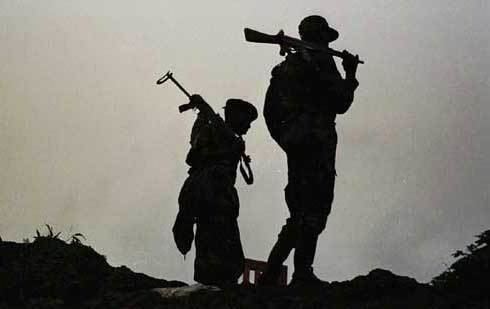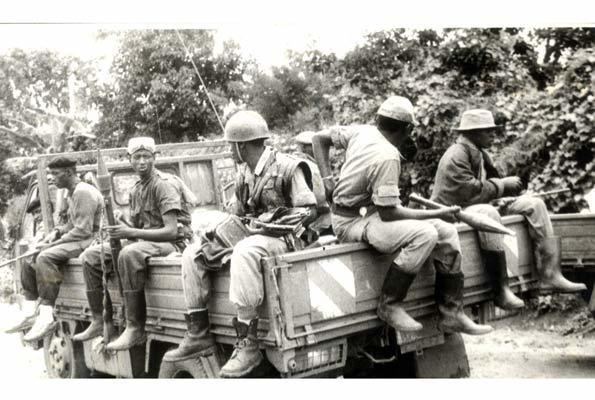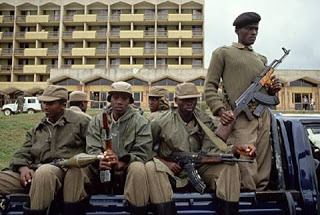Chamber of Deputies 37 / 80 | Founded 1987 | |
Ideology NationalismTutsi interestsModernismClassical liberalism Political position Right-wing (economic)Centre-left to Left-wing (social) | ||
The awful aftermath of the rwandan genocide
The Rwandan Patriotic Front (French: Front patriotique rwandais, FPR) is the ruling political party in Rwanda. Led by President Paul Kagame, the party has governed the country since its armed wing ended the Rwandan Genocide in 1994.
Contents
- The awful aftermath of the rwandan genocide
- Rwanda tutsi rebels seize kigali french troops
- Rwandese Alliance for National Unity
- Rwandan Patriotic Front
- References

Rwanda tutsi rebels seize kigali french troops
Rwandese Alliance for National Unity

Following the overthrow of Idi Amin in 1979, the Tutsi refugee intelligentsia in Uganda set up the region's first political refugee organization, the Rwandese Alliance for National Unity (RANU), to discuss a possible return to Rwanda. Though primarily a forum for intellectual discussion, it became radicalised after Milton Obote's rigged election of 1980 resulted in many Tutsi refugees joining Yoweri Museveni in fighting the Ugandan Bush War. In response, Obote denounced Museveni's National Resistance Army (NRA) as composed of Banyarwanda. A failed attempt to force all Tutsi refugees into the refugee camps in February 1982 resulted in a massive purge, driving 40,000 refugees back into Rwanda. Rwanda declared that they recognized only 4000 of these as Rwandan nationals, while Uganda declared that they would take back only 1000. The remaining 35,000 were left in a legal limbo along the border region that lasted for years, from where many refugee youth left to join the NRA.
Two of the 27 people who were part of the 1981 NRA raid at Kabamba that began the war were Tutsi refugees: Fred Rwigyema and Paul Kagame, who had grown up together in Kahunge refugee camp and were both active members of RANU. By the time that the victorious NRA entered Kampala in 1986, about a quarter of its 16,000 combatants were Banyarwanda, while Rwigyema was its deputy commander. After the Museveni government was formed, Rwigyema was appointed deputy minister of defense and deputy army commander-in-chief, second only to Museveni in the military chain of command for the nation. Kagame was appointed acting chief of military intelligence. Tutsi refugees formed a disproportionate number of NRA officers for the simple reason that they had joined the rebellion early and thus had accumulated more experience.

The contributions of the Banyarwanda in the war were immediately recognized by the new government. Six months after taking power, Museveni reversed the decades-old legal regime and declared that Banyarwanda who had resided in Uganda would be entitled to citizenship after 10 years. In December 1987, RANU held its seventh congress in Kampala and renamed itself the Rwanda Patriotic Front. The new RPF, dominated by Banyarwanda veterans of the war, was far more militaristic than the original RANU.
Rwandan Patriotic Front

On 1 October 1990 the RPF invaded Rwanda, starting the Rwandan Civil War. Despite commander Fred Rwigema being killed on 2 October, the RPF incursion was initially successful. However, the Rwandan Army received help from Belgium, France and Zaire and within a month had regained the initiative, forcing the RPF back into Uganda.
Paul Kagame was asked to return from his military studies in the United States to take over the RPF. Thereafter the RPF resorted to guerilla attacks, focussing on the Byumba and Ruhengeri areas, gaining control of much of the north of the country in 1992. Eventually negotiations between the RPF and the Rwandan government led to the signing of the Arusha Accords in 1993, resulting in RPF personnel and other refugees being allowed to return to the country.
The cease-fire ended on 6 April 1994 when President Juvénal Habyarimana's plane was shot down near Kigali Airport, killing him and Cyprien Ntaryamira, the President of Burundi. It is still unknown who launched the attack; the RPF blamed Hutu extremists in the Rwandan government, while the government claimed that the RPF was responsible for the attack. The shooting down of the plane served as the catalyst for the Rwandan Genocide, which began within a few hours. Over the course of approximately 100 days, 1,000,000 Tutsi were killed, on the orders of the interim government. The Tutsi RPF restarted their offensive, and took control of the country methodically by cutting off government supply routes and taking advantage of the deteriorating social order. On 7 June, the Hutu Archbishop of Kigali, Vincent Nsengiyumva, was murdered near the Kabgayi church center with two bishops and thirteen priests by members of the RPF, who were said to have believed the prelates were involved with the killing of their families.
The RPF victory was complete when Kigali was captured on 4 July and the rest of the country on 18 July. The RPF's Pasteur Bizimungu was installed as President of Rwanda, with Kagame appointed Vice President. The RPF was split into a political division which retained the RPF name, and a military one, called the Rwandan Patriotic Army (now the Rwandan Defence Forces).
In February 1998 Kagame was elected president of the RPF, and became national President in March 2000. Following a constitutional referendum in 2003, Kagame was elected President with 95% of the vote. The RPF formed a coalition with several smaller parties, which received 74% of the vote in the 2003 parliamentary elections, winning 40 of the 53 elected seats in the Chamber of Deputies. The coalition won 42 seats in the 2008 parliamentary elections, and Kagame was re-elected as President in 2010 with 93% of the vote. The 2013 parliamentary elections saw the RPF-led coalition win 41 seats.
